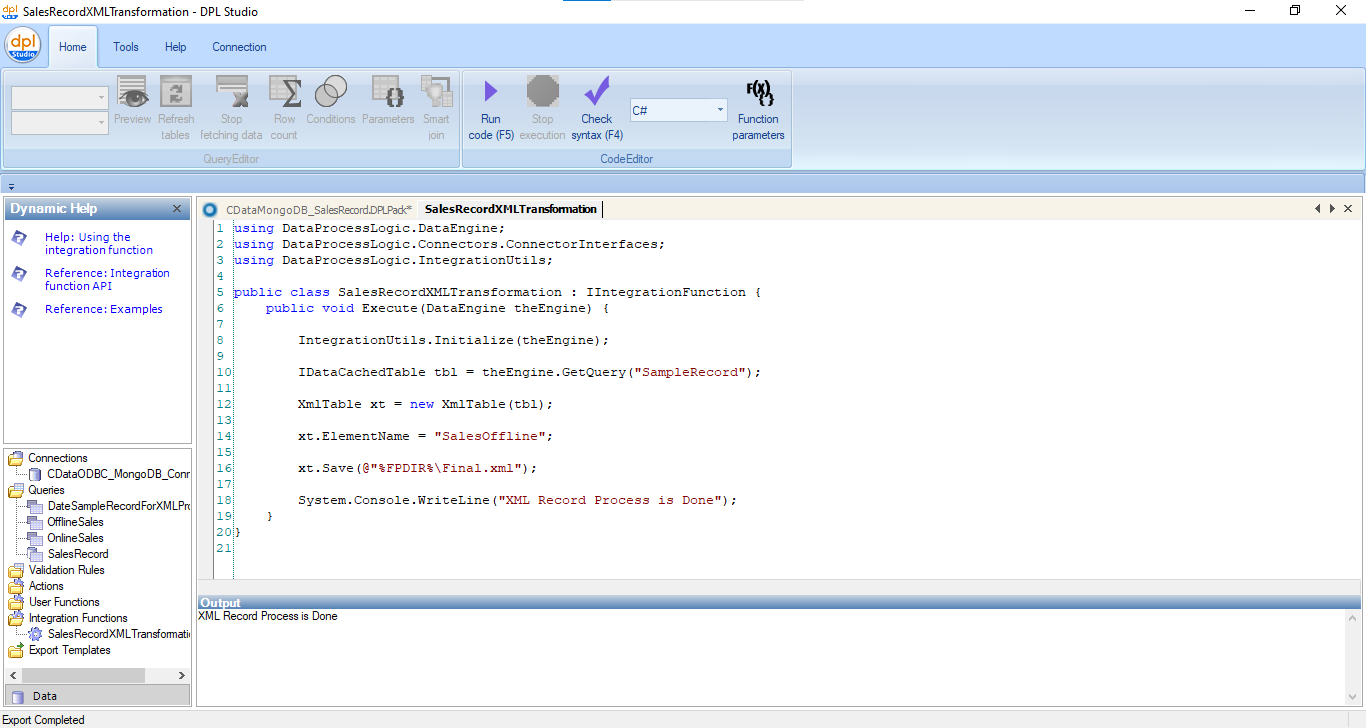Goal and Summary
In modern data integration and transformation platforms, flexibility and extensibility are critical to efficiently processing and validating data. With the ability to leverage multiple languages like C#, VB, and JavaScript, users can create dynamic, on-the-fly transformation and validation logic tailored to specific business needs.
By integrating over 100+ transform functions, your system can efficiently process, validate, and manipulate records in real time.

This robust system provides a highly adaptable framework where users can inject custom logic through on-the-fly code execution in various programming languages.
Transform Functions for Data Validation and Processing
With a library of over 100+ transform functions, your platform supports a wide range of data manipulation and validation tasks. These transform functions allow the system to:
- Cleanse Data: Removing unwanted characters, normalizing text, converting data types, and formatting dates or numbers.
- Validate Data: Checking for nulls, validating data formats (e.g., email, phone numbers), ensuring values fall within a specified range, or verifying consistency with business rules.
- Enrich Data: Augmenting records by adding computed fields, concatenating strings, and performing lookups or merges with reference datasets.
- Aggregate Data: Summing, counting, averaging, or applying other mathematical functions to datasets.
- Filter Data: Isolating subsets of data based on specific conditions, ensuring only relevant data is processed.
Each transform function can be applied in a sequence to build a comprehensive data pipeline that takes raw input and outputs clean, structured, and validated data, ready for further analysis or storage.
Dynamic Integration with C#, VB, and JavaScript
One of the key strengths of this platform is its support for multiple scripting languages—C#, VB (Visual Basic), and JavaScript—enabling users to write custom logic on the fly. This flexibility offers several benefits:
- C# for Powerful Backend Logic: C# is ideal for more complex data transformations, leveraging the extensive .NET ecosystem. Users can write code snippets or full functions in C# to interact with data, perform transformations, or even integrate with external APIs during the transformation process.
- VB for Legacy and Simpler Transformations: VB (Visual Basic) offers an intuitive, easy-to-read syntax and is great for simpler logic and transformations, especially in environments where VB has already been a standard for automation.
- JavaScript for Front-End and Cross-Platform Flexibility: JavaScript, being widely used in web development, is particularly valuable for transformations that require dynamic behavior, especially when interacting with web services or handling real-time data.
By supporting these languages, users can pick the most suitable option based on their specific needs, technical background, and environment.
On-the-Fly Code Execution for Custom Transformations
The ability to write custom logic on the fly provides users with unparalleled flexibility. This feature allows users to:
- Quickly Adapt to Changing Requirements: Without needing to wait for the development of new functions, users can implement and test new logic instantly.
- Perform Complex Calculations: Users can apply specific algorithms or logic in real-time based on the current data context.
- Leverage Multiple Languages: Whether a user is more comfortable with C#, VB, or JavaScript, they can create transformation rules in the language they are most proficient in.
- Easily Test and Debug: With on-the-fly code execution, users can instantly run, test, and debug their transformation logic in real time, iterating quickly to achieve the desired output.
This dynamic scripting capability enables users to easily integrate business-specific logic into the transformation pipeline.